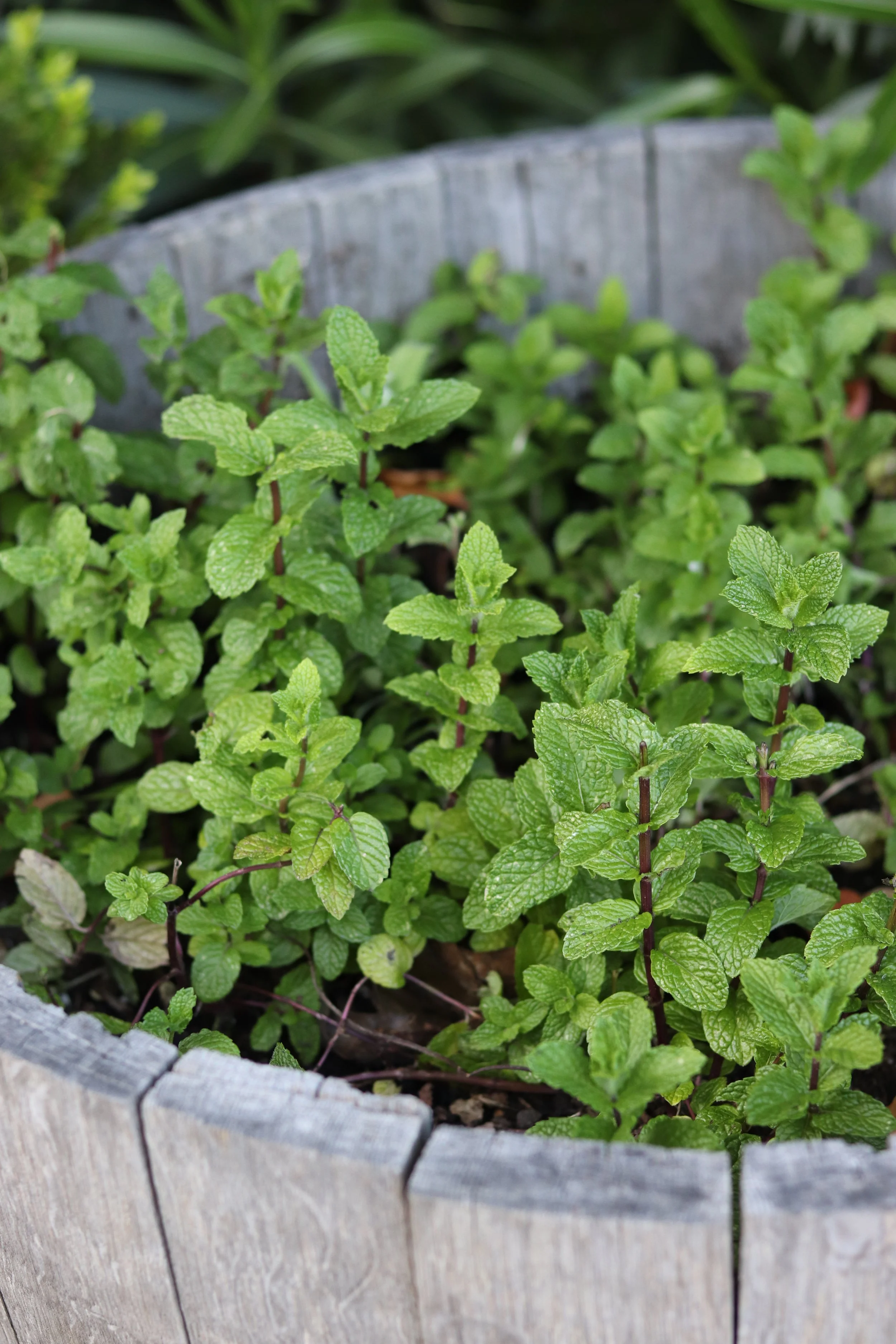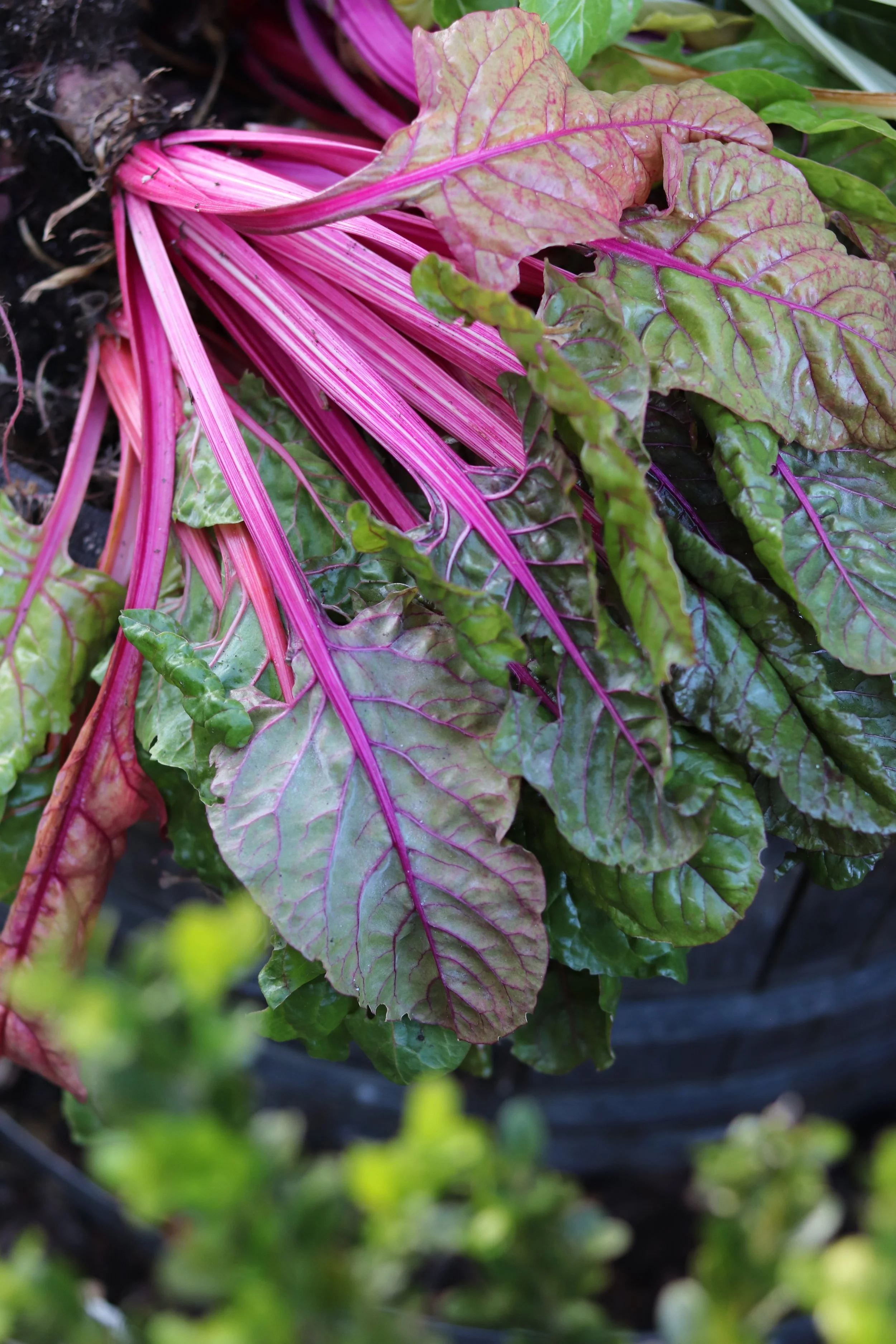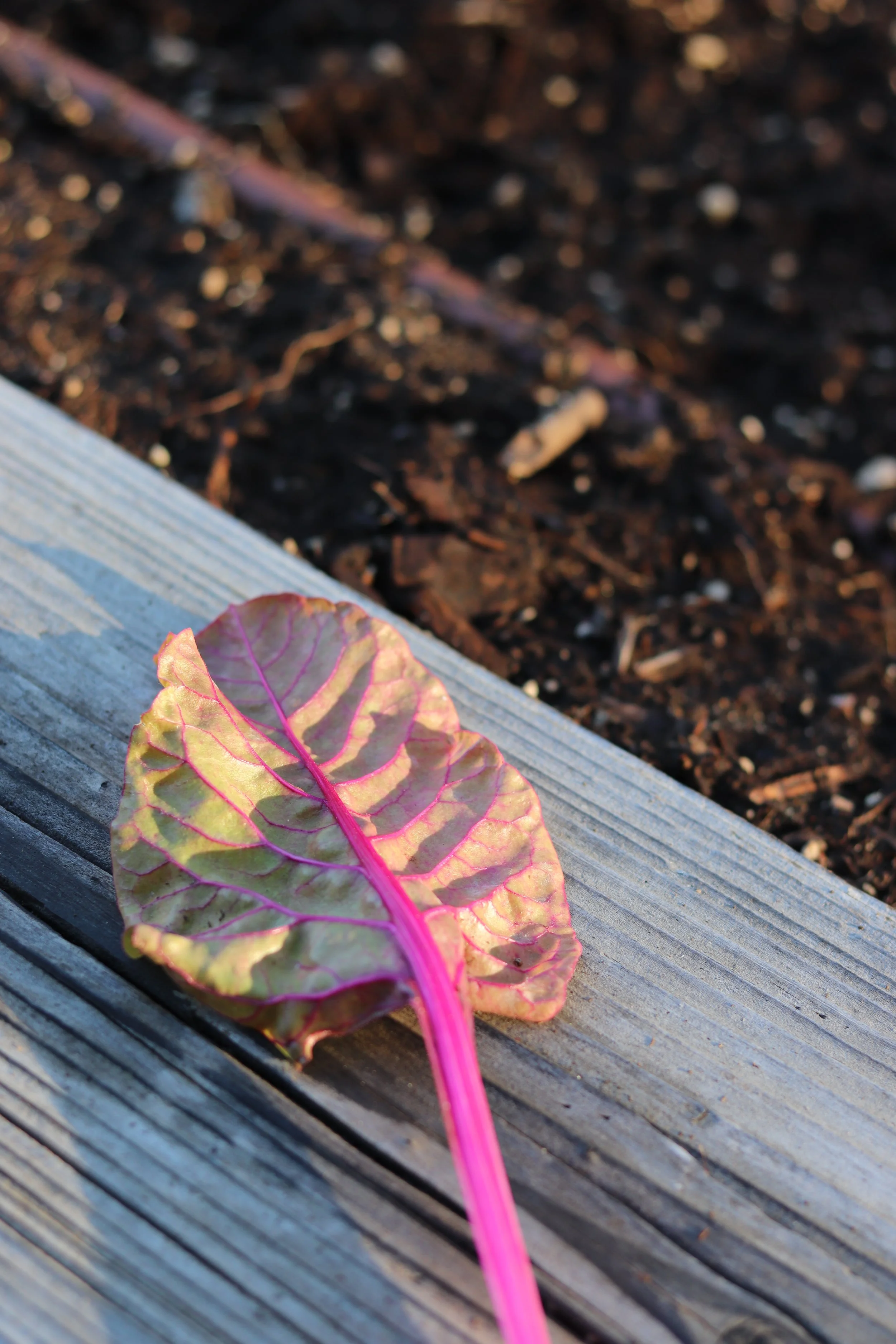Swiss Chard, Two Ways
In season winter through early spring, swiss chard is enormously versatile and grows well regardless of soil type, daylength, or temperature, though it flourishes most in full-sun. While younger leaves can be eaten raw in salads, boiling and blanching mature chard reduces its bitterness. The stalks and ribbing of chard leaves are brilliant in color: red, orange, yellow, pink, and white. Here are two recipes celebrating the bounty of the vegetable — one cooked, one raw.
SAUTÉED SWISS CHARD WITH GARLIC AND FETA
This plate is perfect served as an appetizer with a crusted French bread, or as a side dish to accompany a main.
BASE
Freshly harvested, mature swiss chard
Fresh garlic cloves, minced
Extra virgin olive oil
GARNISH
Feta, crumbled (like Dodoni, made from the milk of sheep and goats that live on meadows across selected regions of Greece)
Lemon, squeezed
Salt and pepper
Heat olive oil in a skillet, add minced garlic, and sauté until brown and aromatic. Immerse the chard in salted, boiling water for three minutes and remove. Toss chard with the simmered garlic and oil until tender and coated. Top generously with crumbled feta and a squeeze of fresh lemon. Before plating, and salt and cracked pepper to taste.
A COLORFUL SALAD
This salad is as vibrant in flavor as it is color. Best enjoyed alone, or with a lemon crusted salmon.
BASE
Freshly harvested swiss chard
Tri-colored radish, slivered
Tri-colored carrot, in ribbons
Diced beet
Goat cheese, crumbled (a favorite being this Sonoma County brand)
DRESSING
Finishing oil made with young olives for a bright, grassy flavor
Zested lemon
Mint leaves
With a single, whole and oversized leaf of chard as your salad’s bed, top with slivered tri-colored radish, long ribbons of tri-colored carrot, diced beets, and goat cheese. Drizzle generously with a finishing oil. Add zested lemon and mint to garnish.








